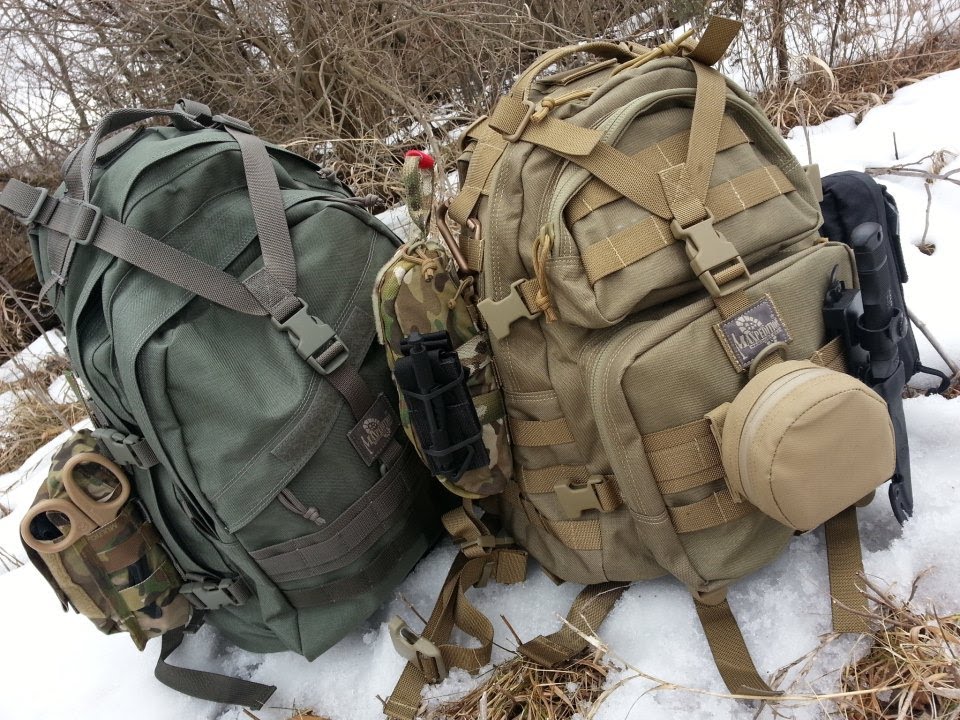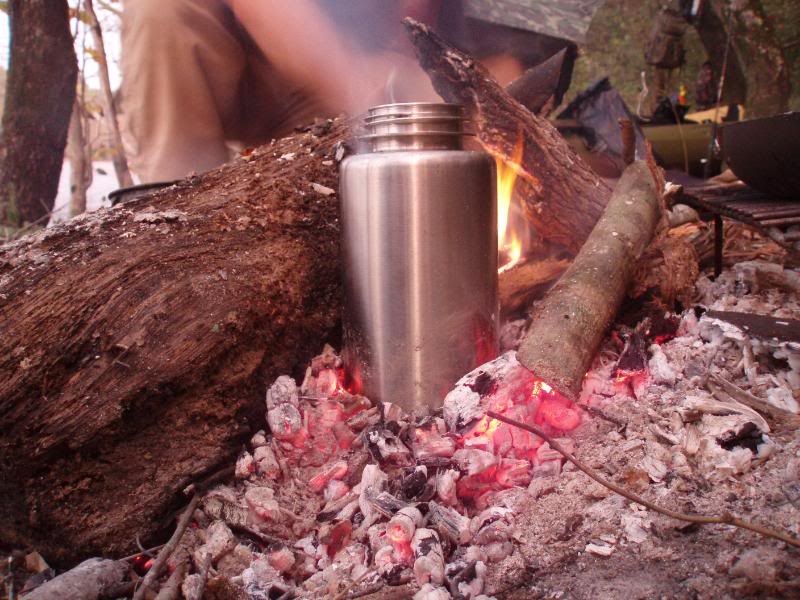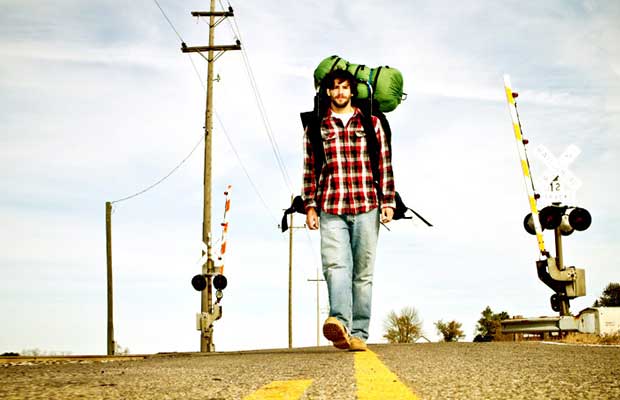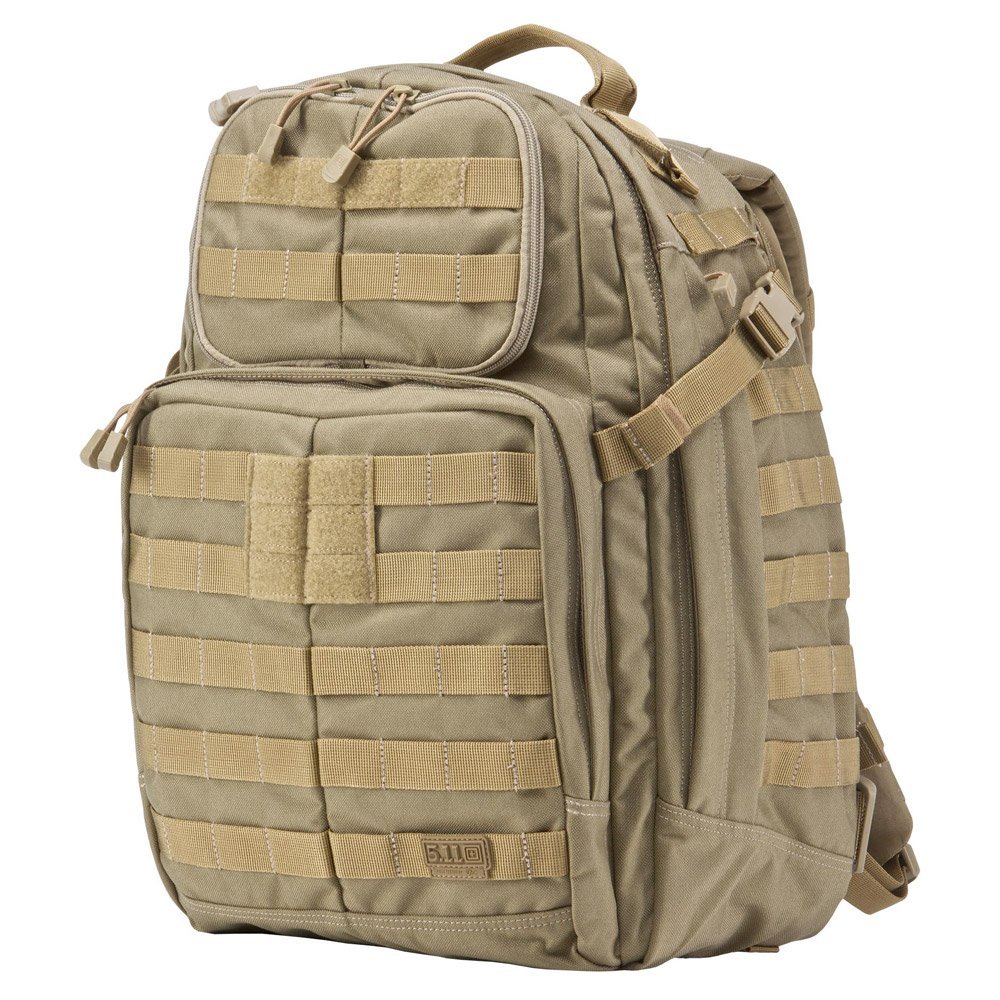A term you will hear frequently on Prepping and Survival websites is a Get Home Bag. You could also hear this called by other names (Get Me Home, Get Back) and they are all pretty much the same thing. Today we are going to discuss why a Get Home Bag is so important and something you should consider having if you are like most people and have to commute away from home every day for work. A Get Home Bag is similar to your Bug Out Bag but they have different purposes and what you need to put into your Get Home Bag will be different.
What is a Get Home Bag?
A get home bag is simply a bag of supplies you can use if you are forced to walk back home after some disaster or crisis. The assumption is that for whatever reason you are away from home, possibly far away and you can’t simply call AAA or a cab to come and get you. There could be several levels of Get Home Bag and I will discuss those below depending on how far away from home you are which could determine how long it will take you to get back home.
I used to have a job for a short time that had an 86 mile (one way!) commute. It was an opportunity that was too good to pass up but thankfully I found another position much closer to home. Every day I would jump in my car and set out on the highway for an hour and a half drive. Naturally, I never really imagined anything would prevent me from driving back home at the end of the day, but if some disaster struck while I was away, 86 miles would be a pretty long haul on foot.
When I worked that job I didn’t have any supplies with me except an iPod probably. I don’t even think I had water in my car. If something had happened, I would have been in trouble if I had to rely on what I had on hand and a Get Home Bag is the answer to that problem. You don’t have to work 86 miles away from home to need a Get Home Bag because the important supplies you have in there could save your life even much closer to home.

Is a Get Home Bag even necessary?
You may be thinking ‘Hey, I don’t work 86 miles away from home’ so why would I need a Get Home Bag and I will concede that in some cases, the distance you are traveling away from home will dictate what you might need to make it home in the first place. Let’s say there is a disaster and you are only 5 miles away or closer from home. You could probably crawl home if you needed in a day. Assuming you didn’t live in an insect infected swamp, the dessert or in a war zone, you might not need a get home bag.
But there doesn’t really have to be a disaster for a get home bag to help you out. Winter storms are a natural occurrence. Last year, there was a huge traffic snarl in Atlanta when a relatively minor amount of snow and ice shut the city down over night. Your Get home bag could give you the supplies you needed to make it home or just as easily make your overnight stay more comfortable.
Get Home bags don’t have to see the end of the world as we know it. There could be earthquakes, wildfires, hurricanes, landslides, winter storms and on and on. Just having this backup could come in handy.
Your Get Home Bag packing list
So enough about the purpose of a get home bag, what do you pack in there? I think that we could logically break this down into different tiers or levels for how long the get home bag would need to be called into service to get you home. There will be seasonally adjusted items but I will call those out on the list below.
Assuming the average uninjured adult walks approximately 3 miles per hour we will have three tiers below for distances of 3 to 90 miles. As with everything else in prepping your needs and situation as well as the actual disaster will have an effect on what you will need to use and how your preps would be different. This is just a general guideline but should be enough for the average person in average conditions.
Tier 1 – 1 – 3 Hours away
If you had to walk back home for 3 hours that could mean that you work approximately 9 miles away from home. This is very similar to my commute now and unless meteors hit the ground or we were bombed by someone, I think all things being equal I would be home in a relatively short time. Anything I pack is going to help me along my journey but does not anticipate an overnight stay. I would add some items just in case because I like to be prepared for surprises.
- A good folding knife – This should be common sense. A knife and actually the first 6 items on this list are part of my Every Day Carry (EDC) so technically I have them wherever I go. I carry the Spyderco Tenacious.
- Multi-Tool – From pliers to a small saw, there are a surprising number of things you can do with a good multi-tool.
- Bandanna – Bandanas make a great filter for the first stage of water, a dust mask, bandage, and sling or if you plan on robbing a bank you will be in style. Just kidding on that last part.
- Flashlight/headlight – I have a flashlight on my belt and a headlamp in my Get Home Bag. You can’t beat a headlamp at night when you need to have both hands free.
- Water bottle – Ideally a stainless steel water bottle which can be used over a fire to boil water. Even if you don’t have a stainless steel version, something to carry water in.
- Concealed Carry Weapon – Never leave home without it.
- Comfortable/Sturdy footwear – I have written about the importance of good footwear before. You don’t want the S to hit the fan and you are in flip flops.
- Rain gear – Always plan for rain because you do not want to be soaking wet without a chance of drying off. Hypothermia will sap your energy and could kill you at even moderately warm temperatures. An umbrella isn’t a good option because it will require you to hold it and you will just look like a dork if you have to run.
- Gloves – Sturdy gloves will be a huge advantage if you have to do work you aren’t accustomed to. They can prevent cuts, burns and blisters.
- Simple First Aid Kit with Blood Stopper – I am not talking about the cheap kind with Band-Aids and some Neosporin. If you have to walk home you can tough minor cuts out, but a blood stopper or Israeli bandage can be used for large bleeds. If things are bad enough you are walking home, you probably don’t want to go to the hospital if you can avoid it.
- Dust Mask – I have regular dust masks that are really only good for dust and N95 masks which should be used in certain situations.
- Hat – Good at keeping the rain, sun or snow off your head.
- Sunglasses – The ideal pair of sunglasses are also safety glasses to protect your eyes from debris.
- Snack/Energy Bars – Let’s face it you will not die if you have to walk home for a few hours but a little snack bar can lift your spirits and occupy your mind for a while. A little shot of energy never hurt anyone either.
- Spare Ammo – Make sure you can refill that magazine if it empties out.
- Lighter – I have a couple of lighters because they are just simpler than using a fire steel.
- Spare Cash – In a power outage or worse, you may not be able to access the ATM. Credit cards may not be accepted either but cash usually is.
- Paracord – A million and one uses.
- Duct Tape – Two million and two uses.

Tier 2 – 4- 8 hours away
To walk for 8 hours at the average pace of 3 miles an hour that would put you approximately 24 miles away from home. I would have everything in the Tier 1 Get Home Bag plus the following items.
- Spare batteries for flashlights
- Bivvy sack or Wool Blanket – SOL makes a great emergency bivvy sack that will keep you alive in pretty cold temperatures. This or a wool blanket if you have to spend the night outdoors.
- Tarp or Poncho – Either can be used to keep the rain off of you. A camouflage poncho can also help keep you hidden.
- Garbage Bags – You can lay or sit on these to keep water off your backside.
- Spare Medications (if needed)
- Spare socks – If you are walking for over 4 hours or are sweating a lot you will want to change your socks. Hang the old ones off your Get Home Bag to dry out. As a bonus you may want foot powder and moleskin for blisters.
- Additional Layer for warmth – Simple base layers are lightweight and take up little space.
- Wool or fleece cap – Nights get cool even in the summer.
- Radio
- Tinder materials for fire – I have seen some people add dryer lint and some WetFire tabs and place them inside their roll of toilet paper.
- Water purification tablets – Simpler than bleach, cheaper than a LifeStraw and take up less room than most filters. Of course if I was going to carry a water filter I would carry the Sawyer Mini water filter because it takes up minimal room and weighs ounces.
- Toilet Paper – Hey, when the SHTF you might need to take a… well you know what I mean. Also useful for cleaning glasses, blowing your nose or as tinder for a fire.
Tier 3 – Overnight Distance 80 + miles.
If you are like me and the commute was extra-long or the traveling conditions were hazardous it may take you 24 hours to make it home. This will involve sleeping somewhere overnight unless you just have to plug on and make it all in one shot. For a Tier 3 Get Home bag, I would add to the contents of the first two tiers, the following:
- Sleeping Bag – Size and temperature appropriate to your climate and season.
- Large fixed blade knife – This could be used for larger chores like chopping firewood for your fire or making larger holes in people. I carry the Gerber LMF II.
- Spare magazine for pistol – Can’t be too safe.
- Walking Sticks – If you are walking 80 miles you would probably need a walking stick before it’s all over with. Walking sticks relieve pressure on your knees and can also be used with your poncho to make a shelter.
- Advanced First Aid – Blood Stoppers, Celox and Ace Bandage
- Additional Energy Bars or Survival Rations
What is the best bag to use for a Get Home Bag?
That is the million dollar question isn’t it? Well, first it helps to assemble all of your items to see how much space you need. For my Tier 1 Get Home Bag I use a Maxpedition Jumbo Versipack which fits everything I have, minus the shoes very nicely. I haven’t used them personally but am interested in the 5.11 Rush bags that come in three sizes to coincide with the duration of your stay (12, 24 and 72). I know the 5.11 brand and have several of their products, just not any bags and they have been of the highest quality. You do pay for that quality, but I think it is worth it and I want to get my hands on one of these bags for a review.
I have also been interested in looking at the Paratus 3 Day Operator’s Pack from 3VGear. The price is certainly reasonable so I am considering getting one of those to review also. At less than half the price of a 5.11 bag, it’s worth considering. There are so many options out there and you don’t have to spend a fortune on a bag to hold your gear. Most likely you aren’t being dropped into hostile territory in Afghanistan so most regular backpacks will do the job for you but your own needs and tastes will decide what works best.
In conclusion, you might be wondering what the difference between a Bug Out Bag and a Get Home Bag is and if you count all of the tiers together, throw in some more food and maybe cooking utensils you are pretty much looking at the same thing. It might be a good indicator that you have too much if you can’t tell the difference. Either that or you work a long way from home.

Hopefully this helped with some information. Any items I missed?
by Pat Henry





I’m curious as to the weight of what would be the second tier (medium range) bag?